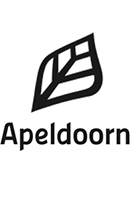Spring 2016, we are guests of Jan en Netty Vink; the owners of the Rietveld Cordemeyer Huis in Apeldoorn. Artists Rūta Butkutė, Remy Jungerman, Babette Kleijn, Sachi Miyachi and curator Marjoca de Greef explore the house, meet the owners and reflect on the fundamental principles upon which the house was built.
Voorjaar 2016 zijn we te gast bij Netty en Jan Vink, eigenaars en bewoners van het Rietveld Cordemeyer Huis te Apeldoorn. Rūta Butkutė, Remy Jungerman, Babette Kleijn, Sachi Miyachi en curator Marjoca de Greef exploreren het huis, ontmoeten de eigenaars en reflecteren op de ideeën die ten grondslag liggen aan het huis.
10 April – 22 May 2016
Rietveld Cordemeyer Huis, Apeldoorn
Rietveld Cordemeyer Huis, Apeldoorn
The artists responded to the ideas of ‘het nieuwe bouwen’ and ‘beter wonen’, the ideas of the architect G. Th. Rietveld and designer A. R. Cordemeyer.
What’s it like to live in a house packed to the rafters with these fundamental ideas? To live your daily life in a distinctive representation of an important episode of Dutch cultural history.
“At the beginning of the twentieth century, architecture was no more than a ‘leftover’ of the late Renaissance; an ineradicable petty-bourgeois style. Although not without craftsmanship, it was an obstacle for the honest design of new manufacturing processes. Many transitional styles proved to be imperative as relief from this ‘routine-style’, so we could finally postulate a contemporary perception of design and space.” – About ‘De Stijl’ Movement, an unpublished essay by Gerrit Rietveld, 1960.
What’s it like to live in a house packed to the rafters with these fundamental ideas? To live your daily life in a distinctive representation of an important episode of Dutch cultural history.
“At the beginning of the twentieth century, architecture was no more than a ‘leftover’ of the late Renaissance; an ineradicable petty-bourgeois style. Although not without craftsmanship, it was an obstacle for the honest design of new manufacturing processes. Many transitional styles proved to be imperative as relief from this ‘routine-style’, so we could finally postulate a contemporary perception of design and space.” – About ‘De Stijl’ Movement, an unpublished essay by Gerrit Rietveld, 1960.
De kunstenaars onderzoeken hoe de idealen van het ‘het nieuwe bouwen’ en de ‘beter wonen-periode’ zich hebben gehandhaafd. Hoe gaat het met de ideeën van de architect G. Th. Rietveld en de ontwerper A. R. Cordemeyer die ‘de moderne mens ontvankelijk wilden maken voor het nieuwe in de Beeldende Kunst’. Hoe is het om te leven in een huis zo zwanger van de idealen en zo kenmerkend voor een belangrijke tijd uit de Nederlandse cultuurgeschiedenis.
“In ’t begin dezer eeuw was de architectuur […] niet veel meer dan een late renaissance overschot; een op zichzelf onuitroeibaar burgerlijke, doch geraffineerde handwerkstijl, zeer belemmerend voor de eerlijke vormgeving van machinale productie. Veel overgangsstijlen bleken nodig om de architectuur van deze sleurstijl te verlossen en de eigentijdse visie constructief en ruimtelijk te bepalen.” – Gerrit Rietveld over de Stijl-gedachte, in een ongepubliceerd werk in 1960.
“In ’t begin dezer eeuw was de architectuur […] niet veel meer dan een late renaissance overschot; een op zichzelf onuitroeibaar burgerlijke, doch geraffineerde handwerkstijl, zeer belemmerend voor de eerlijke vormgeving van machinale productie. Veel overgangsstijlen bleken nodig om de architectuur van deze sleurstijl te verlossen en de eigentijdse visie constructief en ruimtelijk te bepalen.” – Gerrit Rietveld over de Stijl-gedachte, in een ongepubliceerd werk in 1960.
In de pers:
DutchReview Interview, 21/2/16
Ruta Butkute:
www.rutabutkute.com
Remy Jungerman:
www.remyjungerman.com
Babette Kleijn:
babettekleijn.hotglue.me
Sachi Miyachi:
www.sachimiyachi.com
DutchReview Interview, 21/2/16
Ruta Butkute:
www.rutabutkute.com
Remy Jungerman:
www.remyjungerman.com
Babette Kleijn:
babettekleijn.hotglue.me
Sachi Miyachi:
www.sachimiyachi.com















